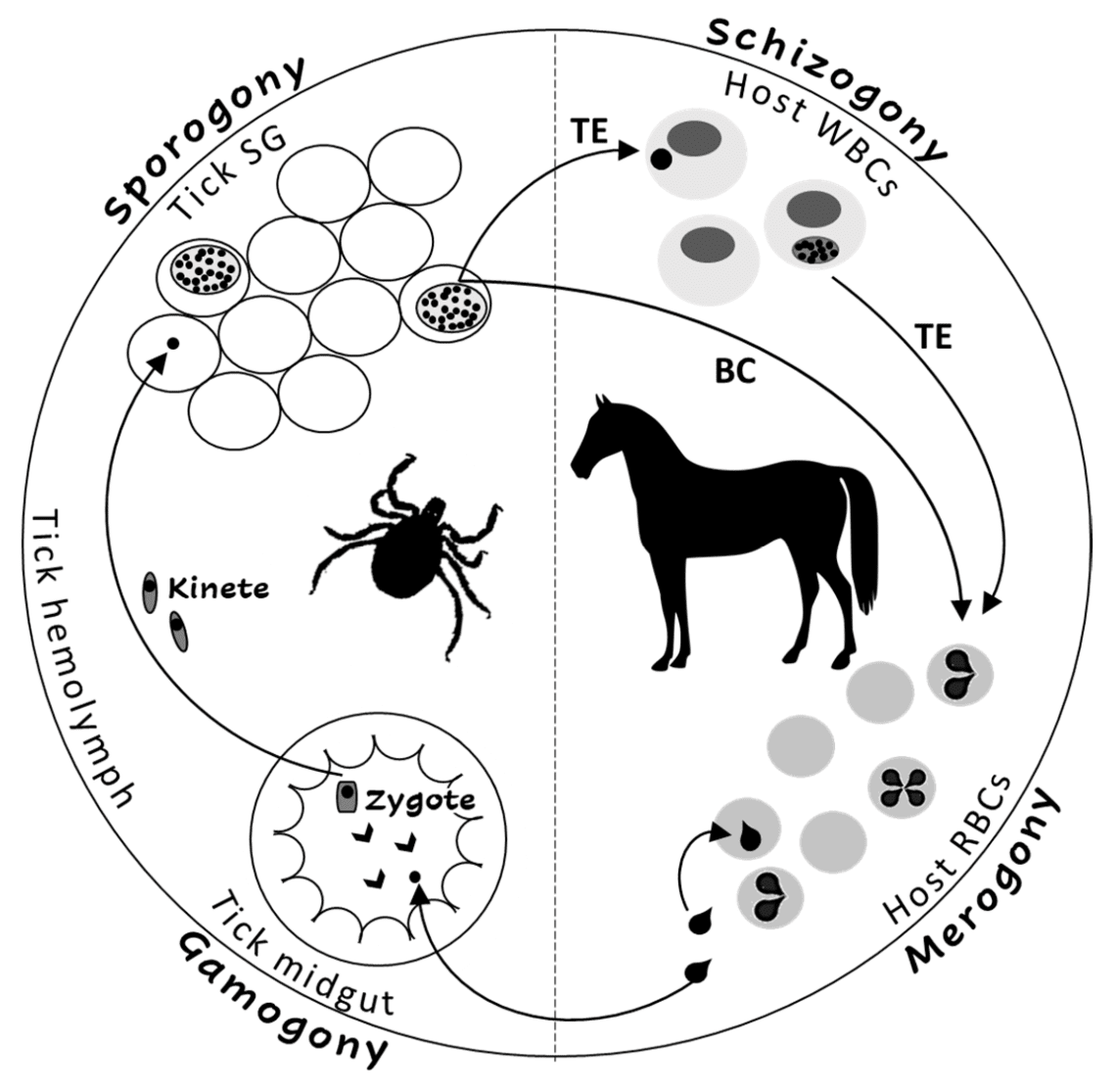
What you need to know about piroplasmosis
Many dog owners know firsthand about tick bites and the dangers of piroplasmosis (or babesiosis). Unfortunately, the number of cases of infection with piroplasmosis is only increasing – two to three times over the past 10 years! The scale of the disease can be judged by the fact that in recent years, 14-18% of dogs whose owners turned to Minsk veterinary clinics for help were diagnosed with piroplasmosis (babesiosis).

Contents
What is piroplasmosis (babesiosis) in dogs
This is a blood-parasitic disease that is transmitted through the bites of ixodid (pasture) ticks, occurs in an acute or chronic form. The causative agent of the disease enters the dog’s blood at the time of the tick bite. As a result, red blood cells are destroyed, and cell fragments are deposited in the renal tubules, causing hematuria and renal failure. The lack of red blood cells and hemoglobin disrupts the functioning of all organs of the dog. Toxins entering the bloodstream cause severe intoxication of the body. If the CNS is irreversibly affected, the prognosis is poor. Basically, infection takes place in 2 waves a year: spring (from April, and sometimes even from March to mid-June) and autumn (from mid-August to early November). The peak is in May-June and August-September. The disease can proceed at lightning speed (superacute) and chronically. The incubation period for infection with a natural strain is 13-21 days, for experimental infection – 2-7 days. The duration of the incubation period depends on the age and condition of the animal. With a hyperacute course, the disease can develop very quickly, without the manifestation of clinical signs.
If you notice any of the following signs, contact your veterinarian immediately. Procrastination in this case is literally like death!
Chronic piroplasmosis in a dog
The chronic course of the disease can be observed in dogs that have previously had piroplasmosis, as well as in animals with increased body resistance. In this case, lethargy, loss of appetite, anemia, muscle weakness, and exhaustion are observed. In the first days, the temperature can rise to 40-41 degrees, but then it drops to normal. Often there is diarrhea (and the feces are bright yellow). The duration of the disease can vary from 3 to 8 weeks and usually ends with a gradual recovery.
The disease is extremely dangerous! If pyroprasmos is not treated, mortality reaches 90% on the 3rd to 5th day.
Diagnosis and treatment of piroplasmosis (babesiosis) in dogs
When contacting a veterinarian, you will be asked if you have removed ticks from your pet for 1 to 3 weeks, they will examine the dog and do a blood test. For the treatment of piroplasmosis, drugs based on diamidine and imidocarb are mainly used, as well as drugs to relieve symptoms. In particular, to improve the activity of the cardiovascular system, to relieve intoxication, to restore hematopoietic function, to prevent violations of the integrity of the walls of blood vessels, antimicrobial agents, drugs to maintain liver function, etc.
Immunity against piroplasmosis in dogs is not produced! Therefore, they can get sick several times. Be sure to tell your veterinarian if your dog has had babesiosis before.
After recovery for 1 month, limit the dog’s physical activity, keep him from jumping and running, even if the pet seems active and perfectly healthy. 
Prevention of piroplasmosis (babesiosis) in dogs
The best treatment for piroplasmosis in dogs is prevention! And the only prevention is to prevent tick bites. Today, there are many drugs used to protect against tick bites. The release form is diverse: drops on the withers, sprays, powder, wax pencil, collars, bio-pendants, tablets. Means begin to be applied in the spring (as soon as it gets warmer and the first vegetation appears) and continue until late autumn. If you are planning a trip to places where a pasture tick can attack a dog, treat it with an anti-tick drug. But a tick can attack a dog not only in the forest. In the last two decades, the halo of the spread of ticks has sharply increased, their attacks are increasingly being recorded on the territory of the city – in parks, squares, courtyards.
Be sure to pay attention to the duration of the protective action of the drug. As a rule, it is from 2 weeks to 1 month.
The spray is first sprayed against the coat, then over the coat. The abdomen, neck and groin area are especially carefully processed. Spray the ears and head carefully so that the drug does not get into the mouth or eyes of the pet. If the dog is constantly in danger of being bitten by a tick, it is preferable to use a collar (it has a longer effect – sometimes up to 7 months). It is better to purchase an odorless collar. But if there are a lot of ticks, one collar may not be enough. If you use several protective equipment (for example, a collar and drops on the withers), it is desirable that they be from the same manufacturer. Be sure to pay attention to the expiration date, the integrity of the package, the presence of instructions. Use a protective agent in advance (2-3 days before going on vacation or going out into nature). Be sure to read the instructions! Please note that no drug provides 100% protection, so after each walk, carefully inspect the dog in order to detect ticks in time. There is a vaccine against piroplasmosis. It will not protect against infection when bitten, but will facilitate the course of the disease itself. That is why even a vaccinated dog is shown additional protection measures: drops, collars, etc.
The good news is that a person does not get sick with piroplasmosis and does not get infected from dogs.





